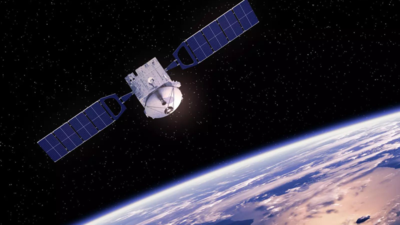As satellite-based communication services near commercial rollout, the Indian government is stepping up efforts to secure national interests amid expected dominance by global players such as Elon Musk’s Starlink, Jeff Bezos-led Amazon Kuiper, and Eutelsat OneWeb.Officials aware of the matter told The Economic Times that a slew of strategic measures are being finalized to boost domestic capabilities in the satcom space. These include setting up a satellite monitoring facility with an outlay of over Rs 930 crore, reserving spectrum and orbital resources for Indian non-geostationary satellite orbit (NGSO) operators, and creating a favourable regulatory ecosystem for establishing gateways within India.“Some of the measures are likely to be announced through the new Telecom Policy, which will create a roadmap for the next five years or by 2030,” said one official.Another official said the Digital Communications Commission (DCC)—the top inter-ministerial panel within the Department of Telecommunications (DoT)—has already cleared the proposal for the satellite monitoring facility. This facility will track both Indian and foreign satellites operating over Indian airspace and monitor satellite-based communication services.“Apart from monitoring, the facility would be helpful for mitigating interference from adjacent satellites in the Indian sky and there would be better coordination,” the official added.At present, India has limited presence in the low-earth orbit (LEO) satellite communications market, which is gaining traction due to its high-speed, low-latency potential. In contrast, global players are expanding rapidly: Starlink already has nearly 7,000 satellites in orbit, Amazon Kuiper plans to launch more than 3,000, and Eutelsat OneWeb currently operates over 600 satellites. While the Bharti Group holds the largest stake in Eutelsat OneWeb, its operational capacity still falls short of Starlink and Kuiper.“There is no India LEO satellite operator as of now, but the situation may change in future and that is why the government does not want Indian entities to be on the backfoot,” the official noted, adding that spectrum and orbital slots would be reserved for upcoming Indian ventures.The government is also considering enabling frameworks to promote ground stations and gateway infrastructure from India, potentially allowing the country to serve as a regional hub. These gateways—critical for supporting NGSO satellite constellations—are complex and capital-intensive installations comprising multiple antennas.“The law enforcement agencies can take a call which countries can be allowed to be served from Indian gateways,” the official said.According to IN-SPACe, India’s space economy has the potential to reach $44 billion by 2033, up from a current global share of just 2 per cent to a projected 8 per cent.The commercial rollout of satcom services is expected in the coming months, contingent on spectrum allocation by DoT. The Telecom Regulatory Authority of India (TRAI) has already recommended that satcom spectrum be administratively allocated for five years at a fee of 4 per cent of adjusted gross revenue (AGR).“Already there are many startups in the satcom space, and the government wants India to emerge as a major player in the satellite market. The regulatory framework will be streamlined and simplified to unlock the potential of the satellite market,” said the second official.The preliminary draft of the new telecom policy is expected to include these structural changes, with a focus on building domestic capacity while maintaining sovereign control over satellite infrastructure and data.










